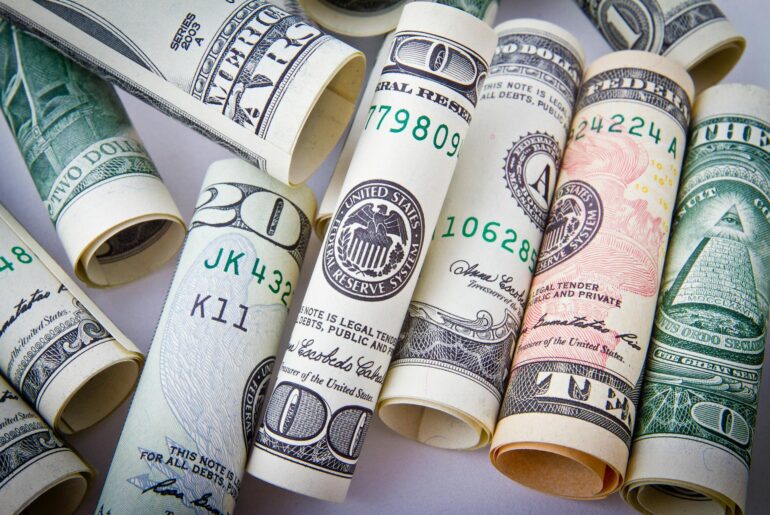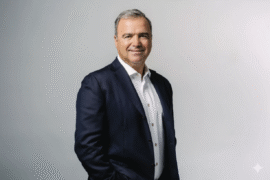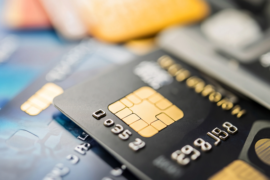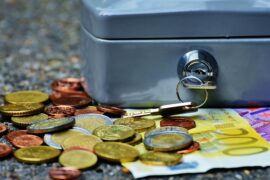This article may contain references to products or services from one or more of our advertisers or partners. We may receive compensation when you click on links to those products or services. Nonetheless, our opinions are our own.
The information presented in this article is accurate to the best of our knowledge at the time of publication. However, information is subject to change, and no guarantees are made about the continued accuracy or completeness of this content after its publication date.
- What Makes the First $10K a Financial Game-Changer
- The Psychological Impact of Reaching $10,000
- Setting Up a Safety Net with an Emergency Fund
- Investing, Following Savings, and Putting Money to Work
- Paying Down Debt Strategically
- Setting and Achieving Larger Financial Goals
- Starting Retirement Early Pays Off
- Emotional Benefits of Financial Progress
- Conclusion
- Frequently Asked Questions
- Recommended Reads
What Makes the First $10K a Financial Game-Changer
Saving the first $10,000 is an important step in the process of building wealth over time. Increasing living costs, fluctuating inflation, and an uncertain economy highlight the importance of being financially prepared for 2024 and the future. Recent information from the Federal Reserve indicates that over 37% of adults in the U.S. would struggle to cover a $400 emergency expense. This scenario illustrates why saving $10,000 is a reasonable goal and an important one. We will discuss the mental and practical benefits of achieving this goal. It also gives beginners concrete steps they can take to build their financial base, such as setting up an emergency fund, getting ready to invest, managing debt, and setting goals.
The Psychological Impact of Reaching $10,000
Saving $10,000 is more than just being financially secure. It gives you a sense of achievement and confidence in your mind. When you reach this point, your mind often changes. What once seemed impossible now seems possible. According to research in behavioral economics, people are more likely to save money consistently over time when they can see their financial progress. That first success shows that financial goals are possible, which helps people stick to their budgets.
Setting Up a Safety Net with an Emergency Fund
Unexpected expenses, such as medical bills or car repairs, are part of life. An emergency fund is designed to absorb these shocks. Saving $10,000 can form the base of this financial cushion, helping reduce dependence on credit cards or high-interest loans. Steps to build a reliable emergency fund include
- Establish a goal of saving three to six months’ worth of living expenses.
- Establish a distinct high-yield savings account to avoid unintentional expenditures.
- Automate transfers on your payday to consistently build your savings.
Having this fund in place reduces stress and provides the flexibility to handle financial curveballs without jeopardizing long-term goals.
Investing, Following Savings, and Putting Money to Work
The next logical step after getting the first $10,000 is to put that money to work by investing it. Instead of letting inflation eat away at your savings, diversified investments can help your money grow over time. For instance, new investors may find that low-cost index funds and exchange-traded funds (ETFs) are a good option because they are easy to understand and have done well in the past. The S&P 500 had a return of more than 10% in 2024, thanks to gains in AI and technology stocks. This shows the opportunity cost of keeping a lot of money in regular savings accounts, even though returns are not guaranteed.
Voted "Best Overall Budgeting App" by Forbes and WSJ
Monarch Money helps you budget, track spending, set goals, and plan your financial future—all in one app.
Get 50% OFF your first year with code MONARCHVIP
Paying Down Debt Strategically
Debt repayment remains a top priority, especially when high interest is involved. With $10,000 in savings, individuals can begin to reduce outstanding balances while still retaining a small emergency buffer. A strategic approach includes
- Listing all debts in order of highest to lowest interest rates.
- Using a portion of the savings to pay off high-interest debts first.
- Creating a realistic budget that allocates funds toward debt without fully depleting the emergency reserve.
Reducing liabilities improves credit scores and frees up cash flow for future investments.
Setting and Achieving Larger Financial Goals
People often start planning their finances more broadly after they save the first $10,000. When you save money for the first time, it makes your bigger goals, like buying a house, starting a business, or taking a break, seem more real. Every new milestone gives future efforts more energy. Setting up a savings plan with specific goals, like labeled accounts or a budgeting app, can help you stay motivated. Visual aids, such as milestone charts or financial trackers, help people stay committed and make progress.
Starting Retirement Early Pays Off
Retirement planning should begin as early as possible, and the first $10,000 can serve as seed money for tax-advantaged accounts. Opening and contributing to a 401(k), Roth IRA, or traditional IRA enables individuals to benefit from compound interest over decades. For example, a $10,000 investment growing at an average of 7% annually for 30 years would result in over $76,000. Delaying investment by just five years could result in significantly less, reinforcing the importance of early planning.
Emotional Benefits of Financial Progress
Financial security has emotional rewards. Saving $10,000 fosters a sense of independence and preparedness. According to a 2023 survey by Bankrate, individuals with emergency savings reported significantly lower levels of financial anxiety. The milestone offers not just peace of mind but also the empowerment to make more intentional life decisions.
Conclusion
Saving the first $10,000 is a big step toward being financially free. It lays the groundwork for being ready for emergencies, growing your investments, paying off debt, and reaching your goals. This early milestone gives both stability and opportunity as economic pressures keep rising. Starting off with good money habits makes it more likely that you’ll be successful in the long run. You can reach financial freedom by making a budget, saving money regularly, and setting clear goals. The first $10,000 isn’t the end; it’s the beginning of a better financial future.
Frequently Asked Questions
Why is saving the first $10,000 so important?
It establishes financial discipline, creates a buffer against emergencies, and sets the stage for long-term goals. It also helps develop the habit of saving consistently.
How long does it typically take to save $10,000?
This depends on income, expenses, and lifestyle choices. With a dedicated monthly saving of $500, it could take 20 months. Accelerated progress is possible with side income or reduced discretionary spending.
Should savings come before debt repayment?
Ideally, build a modest emergency fund first (e.g., $1,000 to $2,000), then address high-interest debt. A balanced approach ensures liquidity without accumulating more debt during emergencies.
What’s the best place to keep the first $10,000?
Use a high-yield savings account for emergency funds. Once ready to invest, consider low-fee index funds, retirement accounts, or diversified ETFs to grow wealth over time.
What common mistakes should be avoided?
Avoid mixing savings with spending accounts, underestimating expenses, or delaying investment decisions out of fear. Also, resist the urge to spend large chunks once a goal is reached.
Can inflation reduce the value of saved money?
Yes. Inflation erodes purchasing power over time. That’s why investing once a safety fund is in place is critical to preserving and growing capital.

Reviewed and edited by Albert Fang.
See a typo or want to suggest an edit/revision to the content? Use the contact us form to provide feedback.
At FangWallet, we value editorial integrity and open collaboration in curating quality content for readers to enjoy. Much appreciated for the assist.
Did you like our article and find it insightful? We encourage sharing the article link with family and friends to benefit as well - better yet, sharing on social media. Thank you for the support! 🍉
Article Title: Why Your First K in Savings Matters
https://fangwallet.com/2025/06/23/why-your-first-10k-in-savings-matters/The FangWallet Promise
FangWallet is an editorially independent resource - founded on breaking down challenging financial concepts for anyone to understand since 2014. While we adhere to editorial integrity, note that this post may contain references to products from our partners.
The FangWallet promise is always to have your best interest in mind and be transparent and honest about the financial picture.
Become an Insider

Subscribe to get a free daily budget planner printable to help get your money on track!
Make passive money the right way. No spam.
Editorial Disclaimer: The editorial content on this page is not provided by any of the companies mentioned. The opinions expressed here are the author's alone.
The content of this website is for informational purposes only and does not represent investment advice, or an offer or solicitation to buy or sell any security, investment, or product. Investors are encouraged to do their own due diligence, and, if necessary, consult professional advising before making any investment decisions. Investing involves a high degree of risk, and financial losses may occur including the potential loss of principal.
Source Citation References:
+ Inspo
There are no additional citations or references to note for this article at this time.












































